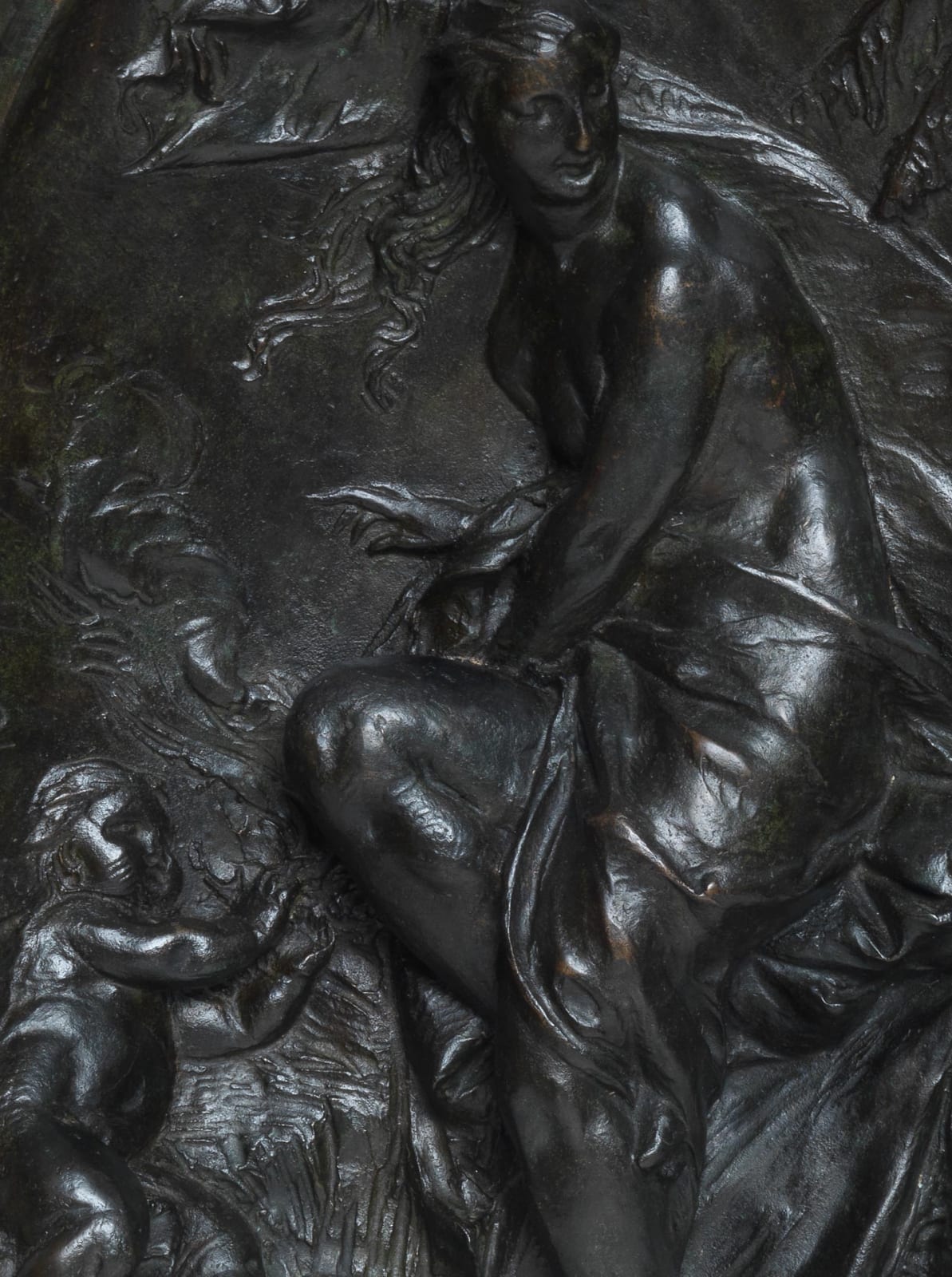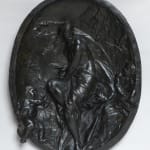

LODOVICO POGLIAGHI MILAN 1857 -VARESE 1950
Provenance
Rome, Private collection
Literature
Mario De Micheli, La scultura dell’Ottocento, Tourin 1992;
Cecilia Chilosi, Ceramiche della tradizione ligure. Thesaurus di opere dal Medio Evo al primo Novecento, Genoa 2011
Lodovico Pogliaghi, a many-sided artist with eclectic tastes (1857-1950), trained at the Accademia di Brera under the guiding hand of Giuseppe Bertini (1825-1898) for painting and initially under Giovanni Strazza (1818-1875) and then under Pietro Magni (1817-1877) for sculpture, completing his course of study in 1880. In 1890 he was himself appointed professor of decorative and ornamental art at the Accademia di Brera. A multi-faceted artist, painter, sculptor, goldsmith, decorator, illustrator, stage designer and restorer, he embodied the figure of a true champion of the 19th century academic tradition in the whole of his output throughout a very long and active career which stretched well into the 20th century. His most important work as sculptor included: the main west door for Milan cathedral with Stories from the Life of the Virgin, the leaves of the door being completed in 1906 and the lintel in 1908; the crucifix and candelabra for the high altar; the main west door for Como cathedral; the sculptural decoration for the Chapel of the Blessed Sacrament in the Basilica di Sant’Antonio in Padua, which was commissioned in 1906 but which took an inordinately long time to finish, only being completed in 1936; work for the cathedrals of Chiavari and of Pisa, where he carved the angels bearing the cross and candelabra for the high altar, in 1910 and 1911; and an allegorical marble group entitled Concord for the Monument to Victor Emmanuel II in Rome, now the Altare della Patria, also in 1910 and 1911. As a painter he is perhaps best remembered for his numerous decorative projects in aristocratic residences in Lombardy from the 1880s onwards, and for his paintings in the Cybo Chapel in Genoa cathedral in 1910. In many of these commissions he was assisted by the artists Carlo and Luigi Rigola.
The cast under discussion here displays immense technical skill, the small oval containing details both in the round and in extremely high relief, such as the head and the legs of the goddess and the legs of the putto – the latter even reaching outside the perimeter of the plaque – together with low reliefs modelled with a subtle and sophisticated graphic line.
While the iconography is clearly Mannerist in inspiration it is equally true that other comparisons may be made with decorative models inspired by another area of the applied arts, namely ceramics. We can compare the oval table top with its carving by Lodovico Pogliaghi with decorative repertoires of Baroque historiated sculpture which is typical, for example, of the white and blue style of Ligurian ceramic. It is worth pointing out that Pogliaghi’s affinity with the ceramic repertoire may have been sparked by his presence in Genoa at the very time the city’s cathedral was being decorated in c. 1910.
Pogliaghi’s reuse of ideas inspired by various different kinds of decorative repertoire reflects his deep interest in history and his eclectic taste both as an artist and as a collector who would snap up models of decorative and applied art in a ceaseless comparison and cross-contamination of different cultural contexts and horizons, as we can still perceive to this day in his atmospheric house museum at the Sacro Monte di Varese.
Join the mailing list
Subscribe to our newsletter to receive all the news about exhibitions, fairs and new acquisitions!


